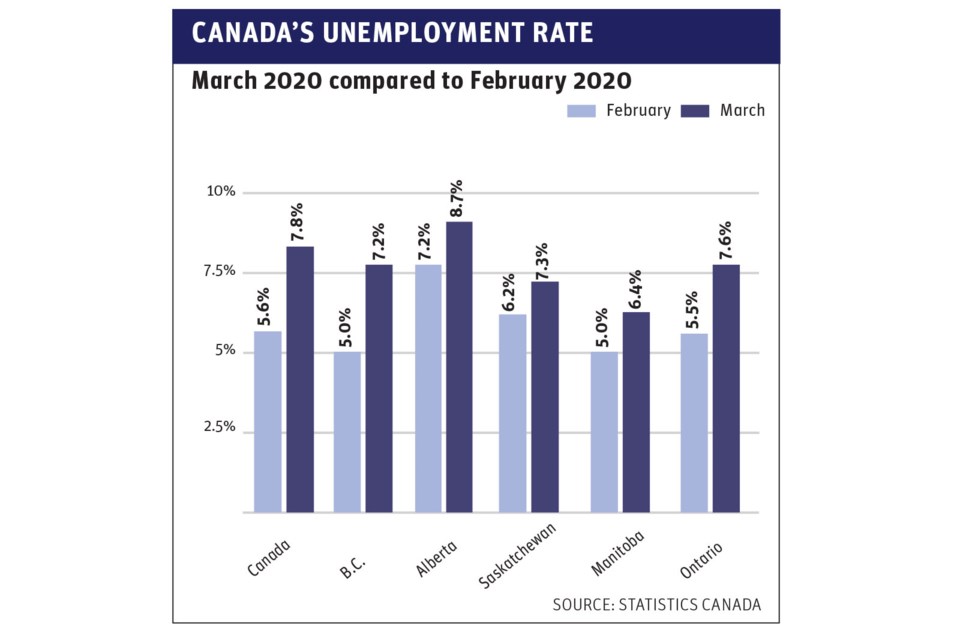The number of Canadians who were unemployed increased by 413,000 (36.4 per cent) from February to March, the largest monthly change since comparable data became available in 1976, chiefly related to the COVID-19 pandemic. However, almost all of the increase in unemployment was due to temporary layoffs, meaning that workers are expected to return to their job within six months, according to Statistics Canada.
The national unemployment rate increased 2.2 per cent to 7.8 per cent in March. This was the largest one-month increase on record, and brought the rate to a level last observed in October 2010.
The unemployment rate increased in all provinces except Newfoundland and Labrador and Prince Edward Island. The largest increases were in Quebec ( up 3.6 percentage points to 8.1 per cent), British Columbia (up 2.2 percentage points to 7.2 per cent) and Ontario (up 2.1 percentage points to 7.6 per cent).
In March, the number of people who were out of the labour force – that is, those who were neither employed nor unemployed – increased by 644,000.
In general, workers in less secure, lower-quality jobs, were more likely to see employment losses in March. Decreases were observed across all types of temporary work, led by those in casual employment.
Of those not in the labour force, 219,000 had worked recently and wanted a job but did not search for one, an increase of 193,000 (743 per cent). Since historically the number of people in this group has been generally very small and stable, the full monthly increase can be reasonably attributed to COVID-19. •
Courtesy: Statistics Canada



